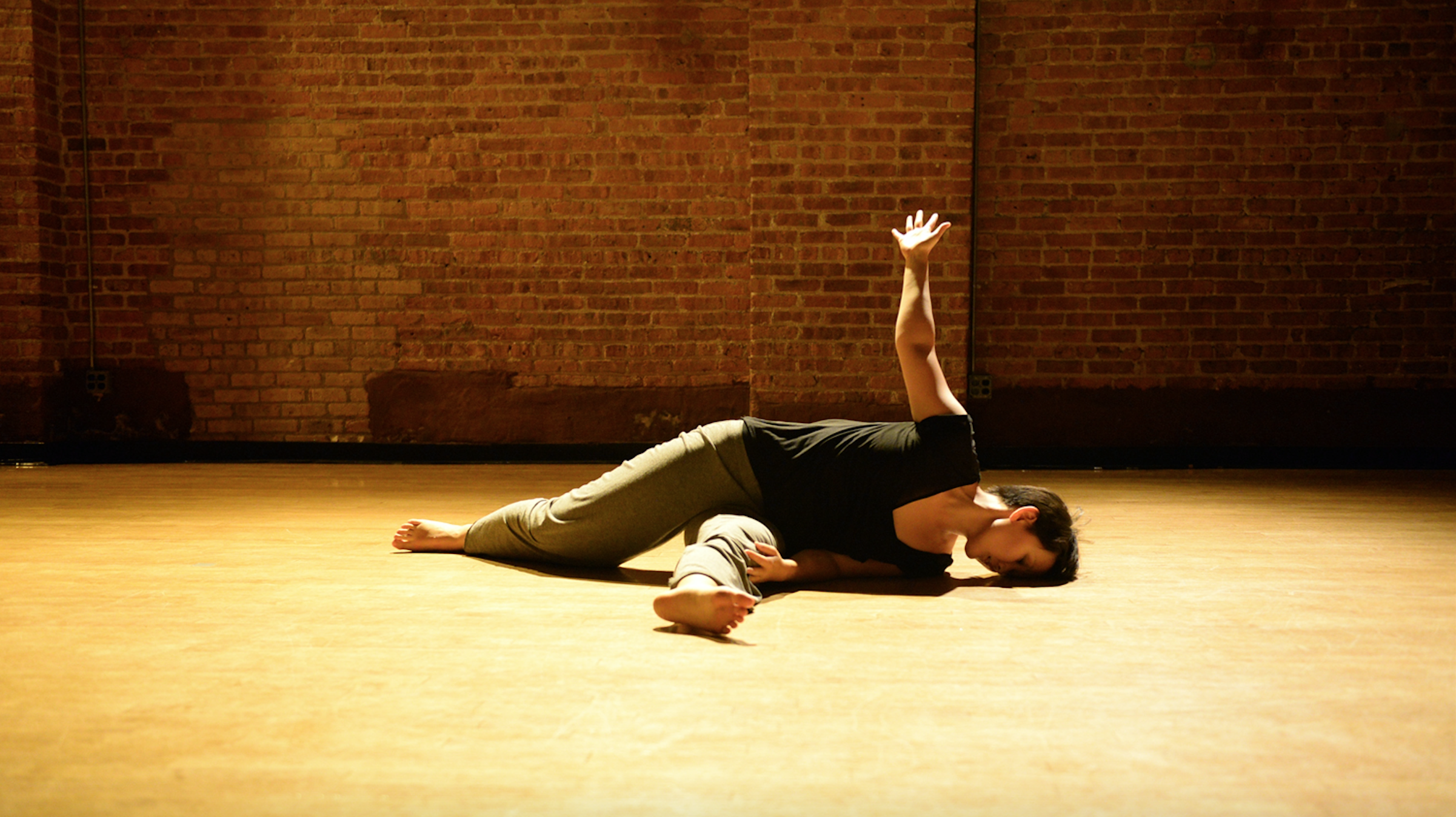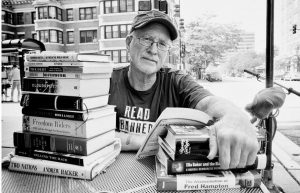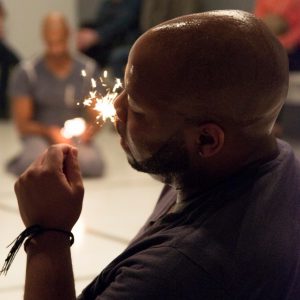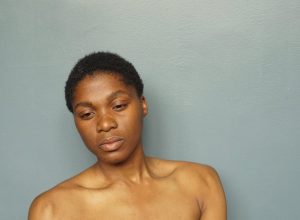Movement Matters is a column that investigates work at the intersection of dance, performance, politics, policy and issues related to the body as the locus of these and related socio-cultural dialogues on race, gender, ability and more. For this installment, we sit down with dancer, collaboration and performance artist Mary Wu to discuss her at times alarming audience interactions, the ethics of art-making and new aesthetics of the body arising out of the disability arts movement.
Michael Workman: Thanks for taking some time to sit down with me discuss your work.
Mary Wu: I haven’t made my own work in a long time, I have to say. I want to make work that I feel like I need to make. It was years ago that I made a solo work now, I showed it at Research Project, this very small work-in-progress showing curated by friends. It was very much making art for art’s sake based on years of solo practice for myself. I wanted to have something to show and then I did it and then I was like, “Oh, I don’t really care. I don’t want to do this again.” So, I’d rather make work with other people and make something that’s more satisfying.
MW: You’re looking for the political meaning in your work?
MWu: Hm. Well, I’m conflicted about making political work too because I’ve heard such interesting negative feedback from other artists about that. I don’t want to say who, but there’s an artist I really respect who says that people are just attaching politics to whatever they make and it’s sort of a way to sex-ify mediocre art. And I don’t want to do that.
MW: Don’t you think that stuff outs itself?
MWu: Maybe. Yeah, I don’t know. I’ve yet to see things that very successfully straddle both. I have another friend who’s an activist and musician who also feels that there’s a huge amount of self-promotion that happens with people who are trying to merge these things together and who are trying to be like, “I’m a movement, but I’m also an artist. I’ll use my artistic skills and it’s more of an ego thing that trying to create a political movement.”
MW: Right, and then there’s the flip-side of that with people like Theaster Gates who are in fact putting money into revitalizing the South Side, with these very demonstrable benchmarks.
MWu: I haven’t been to Dorchester yet, have you?
MW: Oh yeah. And the Stoney Island Arts Bank, it’s all worth seeing. But I guess my question is how does that inform whether you’re participating or making your own work or not?
MWu: Well, I don’t know if you saw when I pasted this on Facebook earlier this year but I said I’m not going to go see any shows unless there’s at least 1 non-white performer. It’s what I choose to participate in, and that’s been really hard. I’ve been not going to a lot of things I’d like to go to, including friends’ shows and then choosing whether to have that conversation or not with that friends and say, “This is why I’m choosing to not come to your show that I care a lot about.”
MW: Does the incidence with which that occurs surprise you? Do you think that communicates a statement that people appreciate and understand?
MWu: Surprise? No, but I’m still really sad and disappointed by it. I wonder about that. I’m not sure what I’m communicating. The 1 friend I did write to about that saying “This is why I’m not going to be there,” she took it pretty well I think but I have yet to see how they will change their future practice. So, you know.
MW: Yeah, I do get it. We were both at the Joanna Furnan’s Lively Community Discussion at Dovetail recently, and I couldn’t help but notice that most of the people who came out for it were all white.
MWu: Yep. Yeah.
MW: …I’d figured if it was a “community discussion” that there’d have been more diversity to that community. I don’t know if that was a matter of the specific outreach or location or whatever, but there’s a lot of different performers in this city.
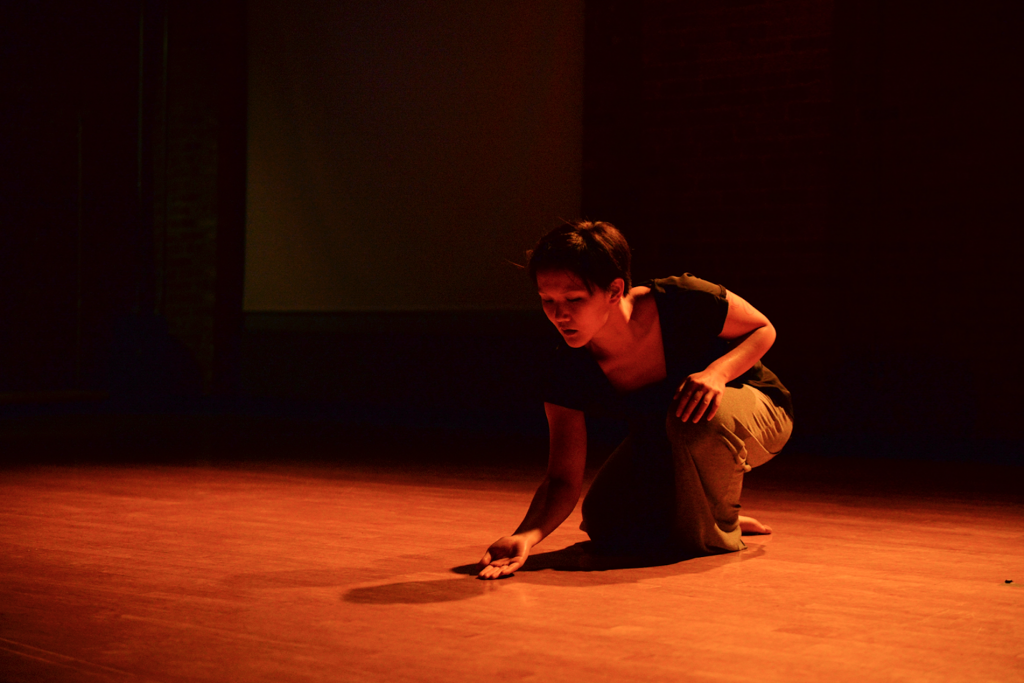
MWu: Yeah, there are. I feel like there’s a lot of separate worlds. I haven’t been in too many other dance communities, but I feel like that’s pretty special to Chicago, racial segregation here is so intense.
MW: Yeah. Although, I go to Links Hall and I see different demographics.
MWu: Do you? What about audience?
MW: Onstage, moreso.
MWu: Really?
MW: It’s not where it should be. It’s not at a parity. But there’s a difference between that and going to PlaceLab. Or other places on the North side where it’s 99% white. So I think Links does a better job comparatively. In any case, I understand your concern to perform with more intentionality about that. Is that what drew you to work with Ania Greiner recently?
MWu: Well, there’s 3 of us, and we’re 3 different races. But I didn’t know that going in, honestly. The idea of doing Yoko Ono’s Cut Piece was really powerful. And not an opportunity I could pass up. Not that we’re doing exactly that piece, but something based on that idea. It’s been really difficult, challenging and I guess edifying, and hopefully rewarding in the end when we come through the end of these performances. We just showed it at Hairpin Arts Center these past 3 days. It’s a situational work, we did it for 3 hours and it was a pretty diverse group of people that came through, not the standard group of people I would have expected. I think it was just some people who just saw there was box wine and just came. I was really shocked by some of the responses. There was one person in-particular who was very drunk and got very belligerent with me. If you’ve seen the original, in the end there’s this guy who goes up and just starts cutting into her slip. So I was like, “Wow, the ’60’s, so crazy, this is like a historical capsule I’m watching.” And then this guy just started talking to me in the performance, he was very forceful and wanted to cut through all of my clothes. We had these dresses on that were made specifically to be cut and he was obviously trying to cut through my clothes and he was also very drunk, so I thought at one point that he might actually cut me.
MW: Oh, what! Was there anyone else there to help moderate it?
MWu: I mean, there was 3 of us, the other 2 women were supposed to facilitate the cutting—and I do think it went a long way to prevent it from going any further into some other areas, but this one person was extremely forceful. And then later, he was making all these comments about wanting to see us naked and his friends didn’t really try to stop him, which I thought was weird, they were probably drunk as well. But anyway, I thought they were gone and we were through all that and it was over. But then later he came back and really tried to rip my dress off.
MW: Ohh, were you still inside when this happened?
MWu: Yeah, we were still performing. It was in this stairwell, so we didn’t know when people were going to come through. But, that one incident, I can say a lot about it like, “Oh, he was drunk,” or whatever. But then there were other, smaller incidents. One guy wanted to cut my hair. For him it was such a game, like “Oh, why don’t we cut your hair too?” And the other women had to say, “Actually, we’re not doing that.” This is a weird thing that’s happened to me in other durational art works too, there’s this objectification where people start treating me like an object and the whole thing becomes a game. But it was very extreme in that space. Or there were these older people who wanted to cut into my friend’s dress and again, they wanted to cut right at her chest, he felt nervous about it so he tried to ask her permission. We weren’t going to speak, that wasn’t part of the score, and also it just shocked me that somehow, asking permission and being nice about it, that it would somehow be okay. I found that somehow more disturbing than the guy openly saying he wanted to see us naked and trying to rip my dress off.
MW: Because it’s asking for the performer’s complicity somehow?
MWu: Yeah. Or for a woman, how people felt really comfortable commenting on her body, “Oh, you have nice thighs.” So this historical piece we were making felt really Modern and necessary, actually. I’m focusing too much maybe on some of the negative experiences—there were a lot of really positive experiences, with people saying “I’d really love to participate but I don’t feel comfortable doing this.” Different reactions. We’ll see how the other nights go. I don’t think they’ll be quite that dramatic.
MW: But this is something you experience as a performer.
MWu: Yeah, there was this other performance I did with Tony Orrico. He used to dance with Tricia Brown, and started doing these Penwald drawings. So we did this piece where we there was a group of us all under a black sheet and we would move very slowly in a manual manner, but something about being under the sheet made it so that—and again, maybe because there was a cash bar but there were people who wanted to poke at us or, “Oh, I wonder if I can touch their hand?” Because I could still hear everything, I was only a few feet or inches away from them. And one of them was like, “Oh, I wonder if that’s a male or female?” Again, it’s objectification, dehumanization.
MW: Is part of the goal in your performances to uncover these biases in the audiences? Is that something you’re looking for?
MWu: Honestly, going into it, it wasn’t something I was looking for. These two performances, I probably should have anticipated it. I don’t know why I didn’t. I thought there was something beautiful about the body being in time and space, that’s why I love durational, site specific works. And for me, the cutting, I thought of it as imperfections and Ania talked about it as aging and I was thinking about it as becoming decrepit and decaying and thought that was a beautiful thing we could all share in, that we’re all falling apart, and we can share in it together and I wanted people to take a piece of me. Not in a violent way, but I want to be vulnerable in front of others as I can be. Yeah, I wear clothes with holes in them. Why do we try to be this perfect idea of ourselves, we are very fragmented.
MW: Yes, and I can see the politics of that as a statement about the necessity of vulnerability in order to have dialogue.
MWu: Yeah. Empathy. I think a body is really good for that because we all have a body and there are so many things that separate us like race and gender and socioeconomic status but we all know what it means to be hungry or cold. We’ve felt the sensations at some point in our lives.
MWu: Although not necessarily the sensations of desperate poverty, where you don’t know where you’re going to get your food, there’s stratifications of that. Obviously one of those perennial questions, but how much do you think art has the power to address those realities.
MWu: Yeah, I think about this a lot. The one word that’s come up in conversation repeatedly with 3 people I love and respect very much is the word “invitation.” And how performance, especially dance, can be the first step in moving to something else, building community, having empathy. Creating these support networks. And how maybe the piece of artwork we make is just the first step in an invitation to a longer process that happens in response. So that’s what I’m interested in.
MW: Yes, absolutely. And that notion is very important in your artistic thinking, isn’t it? The role of rehabilitation in society.
MWu: Oh, yes. I’m very inspired by DisArts, the Disability Arts Movement that’s happening. I’m very inspired by that. The Midwest conference took place a few weeks ago, and I had some great conversations there. The main reason I became an engineer way back when—I study walking—was that I wanted to work with people with physical disabilities. I had this great dream of working with technology to help people to empower themselves, etcetera. I got very disillusioned working in the field in rehab—again, there’s this assumption that there’s a “normal,” that there’s some ideal states. I don’t know what that is, I don’t know why there needs to be one. So, I’m interested in these ideas of neuro-diversity that are floating around right now. But what I find really inspiring about disability is that it could explode our concepts of what it means to be human, to have a body. What is personhood? Right? If you haven’t read Andrew Solomon’s book Far From the Tree, that really blew my mind. At some point, do we not consider someone a person anymore without enough cognitive ability, and what does that mean? So, this idea all of us are only temporarily non-disabled. We’re all going to be disabled and we all were disabled at one point. The body’s in flux, we’re all in transition. So there’s a lot of, at the conference, of “Oh, disability arts is so great, everyone can dance,” and I knew there was going to be a lot of that. It’s so great, all of our different abilities and blah blah blah when there’s so clearly a double standard and it’s always there, it’s always there on stage and why are people who use assistance devices striving to move in an aesthetic defined by people who don’t use these devices, an aesthetic defined by a very tiny, narrow elite of people with a certain body type, all those sorts of things. So there’s also a different group who are saying, “No, let’s not integrate. Let’s make our own form. Let’s make our own aesthetic.” I’m really excited to see what happens with that.
Please feel free to send questions, comments or tips to Michael Workman at michael.workman1@gmail.com. As part of the Movement Matters series, a monthly online conversation on subjects discussed in the column will take place starting with The Integral Necessity of Dance Criticism on Dec. 15, 6:30-9:30pm at High Concept Laboratories (2233 S. Throop St., Chicago). Please join the Movement Matters Facebook page for updates, and to join in on future online conversations.
Featured Image: Photo from Mary Wu’s “One Thing Led To Another”, 2014. Courtesy of the artist.
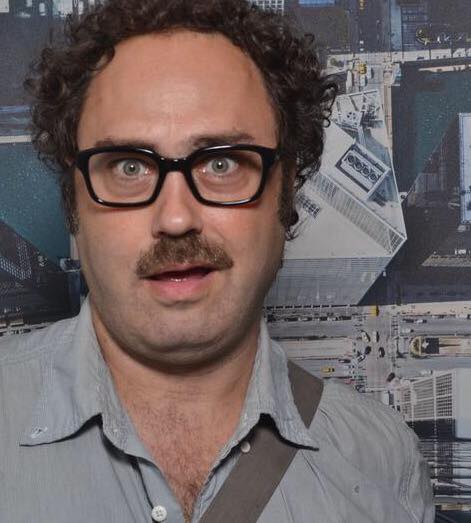 Michael Workman is an artist, writer, dance, performance art and sociocultural critic, theorist, dramaturge, choreographer, reporter, poet, novelist and curator of numerous art, literary and theatrical productions over the years. In addition to his work at The Guardian US, Newcity, Sixty and elsewhere, Workman has also served as a reporter for WBEZ Chicago Public Radio, and as Chicago correspondent for Italian art magazine Flash Art. He is also Director of Bridge, a Chicago-based 501 c (3) publishing and programming organization. You can follow his daily antics on Facebook.
Michael Workman is an artist, writer, dance, performance art and sociocultural critic, theorist, dramaturge, choreographer, reporter, poet, novelist and curator of numerous art, literary and theatrical productions over the years. In addition to his work at The Guardian US, Newcity, Sixty and elsewhere, Workman has also served as a reporter for WBEZ Chicago Public Radio, and as Chicago correspondent for Italian art magazine Flash Art. He is also Director of Bridge, a Chicago-based 501 c (3) publishing and programming organization. You can follow his daily antics on Facebook.
